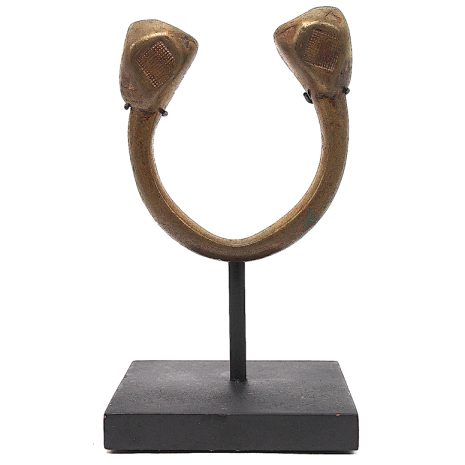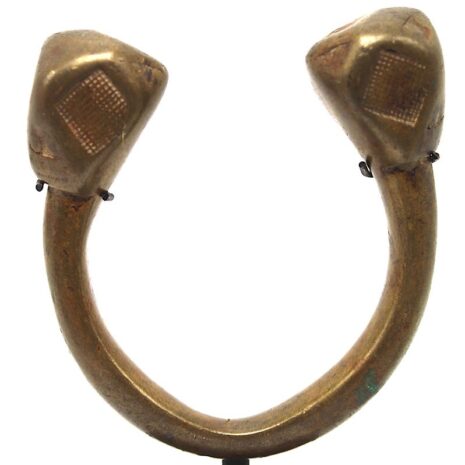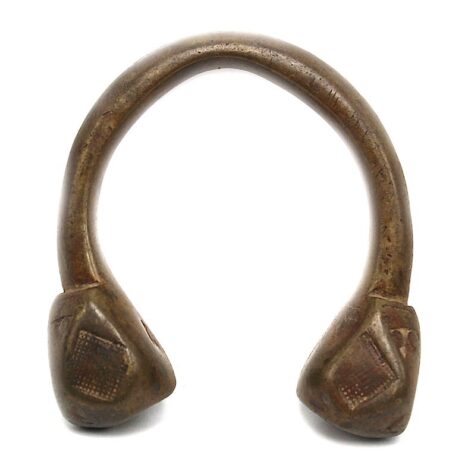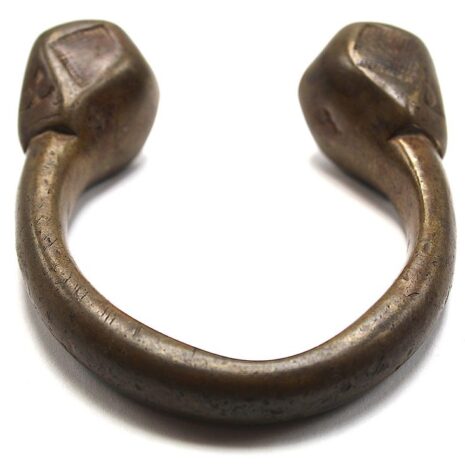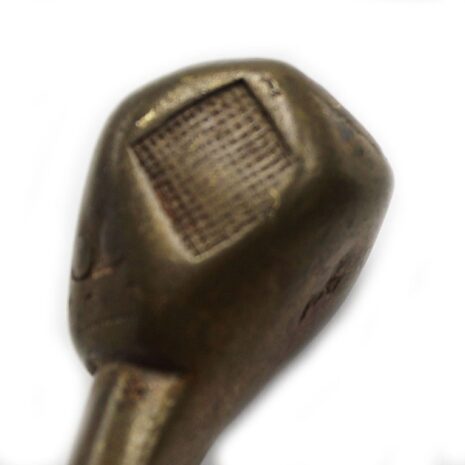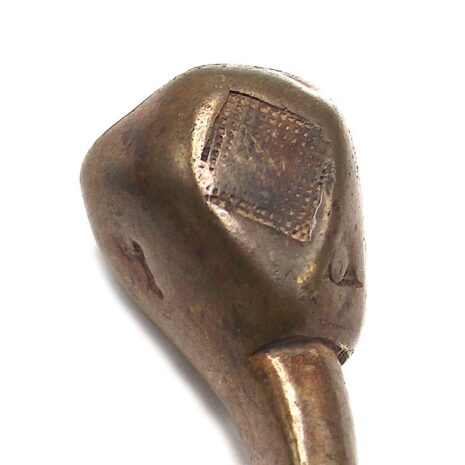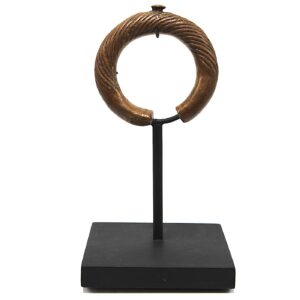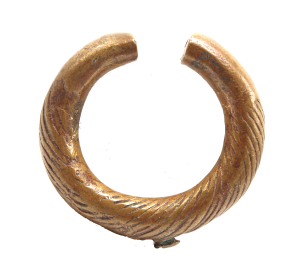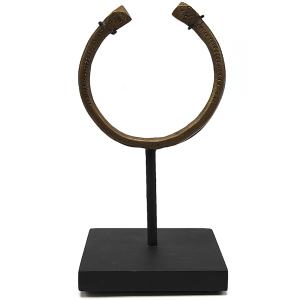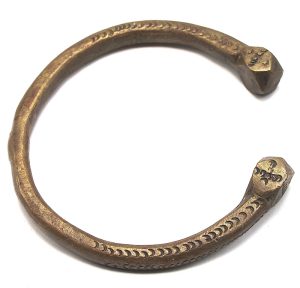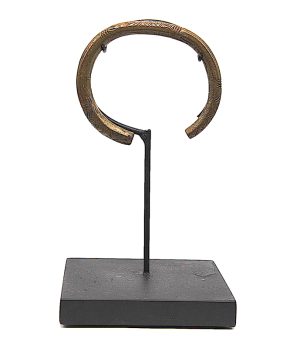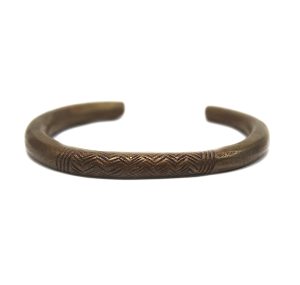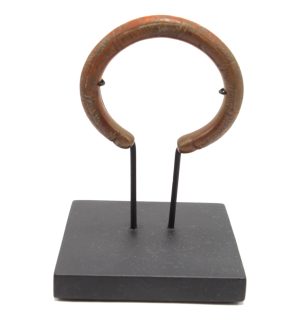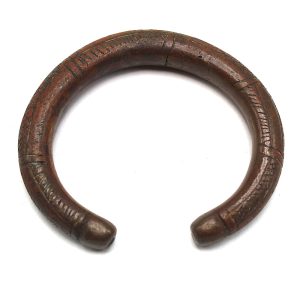Antique Tuareg Manilla Currency/Slave Bracelet, Africa (3152XKM) $285
$285.00
Bracelet H: 3.875” W: 3.5” Thick: 1.125” | FREE SHIPPING WITHIN CONTINENTAL U.S.!
This 18-19th century Tuareg manilla was fashioned using a sand mould in a traditional horseshoe shape with bulbous rounded faceted ends. decorated with hand hammered fine details which have faded from age and wear. Individual Tuareg tribes each use unique symbolic imagery and decorative motifs passed down for generations. It comes with a wood and metal stand.
Description
Historically nomadic tribal people who traversed the Sahel region and Saharan-Africa, the Tuareg in Mali and Niger, like many African peoples, created arm and ankle bracelets that were easy to transport and had many uses: wealth and status symbol, fashion adornments, for ceremonial use for births, coming of age, marriages, and burials, to trade for animals and domestic and agricultural goods and as a medium of exchange, as there were no banks or conventional currency exchange systems. Individual Tuareg tribes use unique African jewelry symbolism and decorative motifs passed down for generations. Dassine Oult-Yemma, the Poet of the Ahaggar wrote that sticks indicate legs of men, camels and other animals, crosses or x’s indicate guiding signals at roads and circles have a spiritual meaning. “We start from our heart, and move from circle to circle ever more widely, into the Circle of Life, like the horizon circles around you and your herd.” (Hagan and Meyers). This bracelet was made from a sand mould in a distinctive horseshoe shape with bulbous rounded faceted ends. The ends are finely decorated with hand hammered diamond shapes enclosing finely incised checkerboard cross-hatching which have faded from age and wear. This bracelet is in excellent condition with a fine patina indicating much wear and some minor pitting, scrapes and discolorations consistent with its age. During the Africa’s colonization in the 1500s, the British, French, Portuguese, Belgians and Dutch appropriated African metalwork bracelets, manufacturing their own in Europe and calling them manillas which they used as currency for the slave trade referred to as slave bracelets. Foreign traders were prohibited from using them under the Manilla Currency Ordinance of 1919, in the 1940s and 50’s they were collected, confiscated and melted down as reusable metals purposes. The measurement is without the stand.
Click here for the Blog Manillas: Former African Trade Currency.
Sources
Helen E. Hagan and Lucile Meyers, Tuareg Jewelry: Traditional Patterns and Symbols, Xlibrus Corporation, 2006.
Additional information
| Place of Origin | Africa |
|---|---|
| Materials and Technique | Bronze/brass/copper alloy |
| Period | Antique (1200-1920) |
| Date | 19-20th Century |
| Dimensions (inches) | Ht: 3.875" W: 3.5" D: 1.125" |
| Dimensions (metric) | H:8.55cm W: 8.89cm D: 2.54cm |
| Weight | 15 oz |
| Condition | Excellent, fine patina demonstrating age and use |
| Item Number | 3152-XKM |
| Shipping Box Size |
